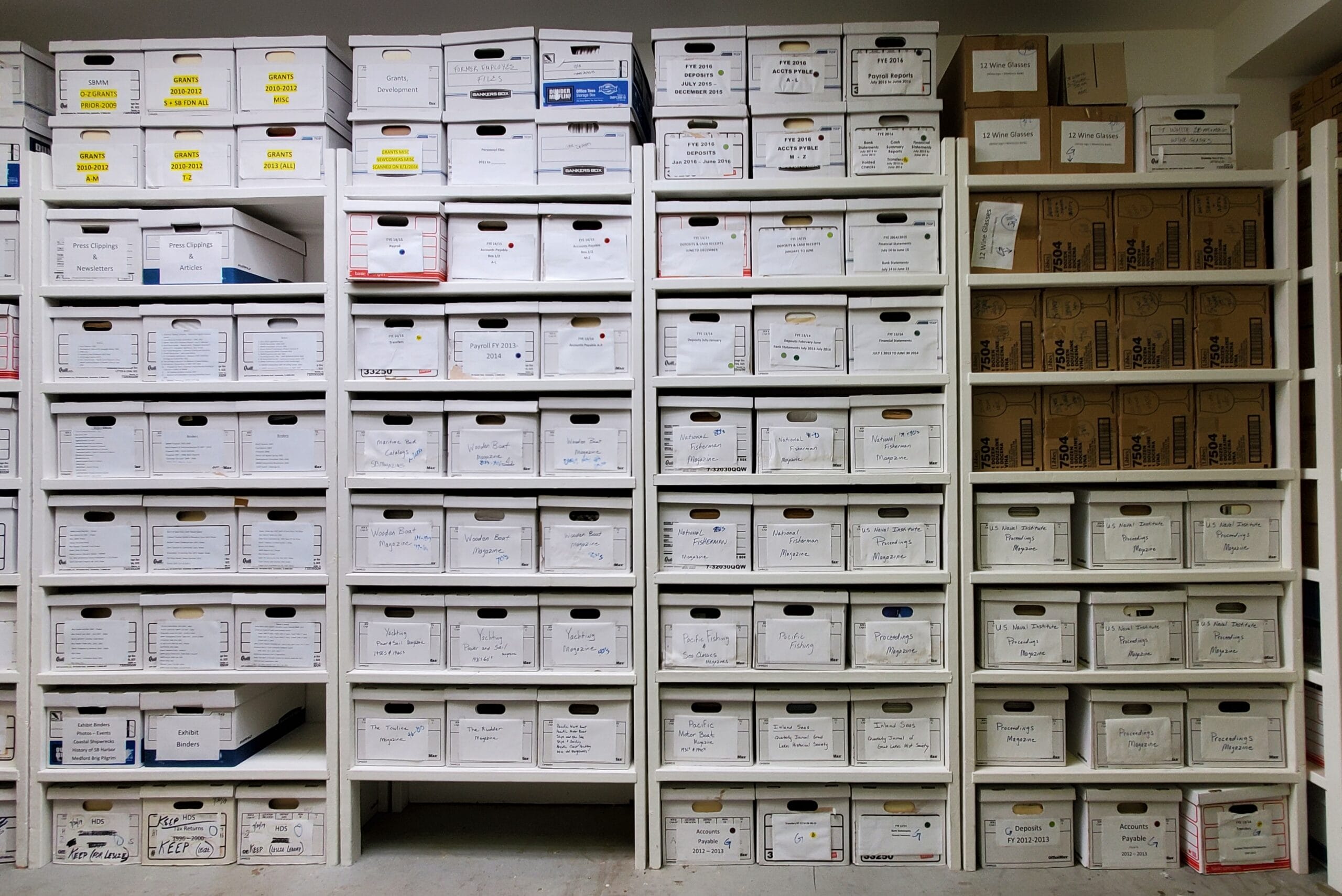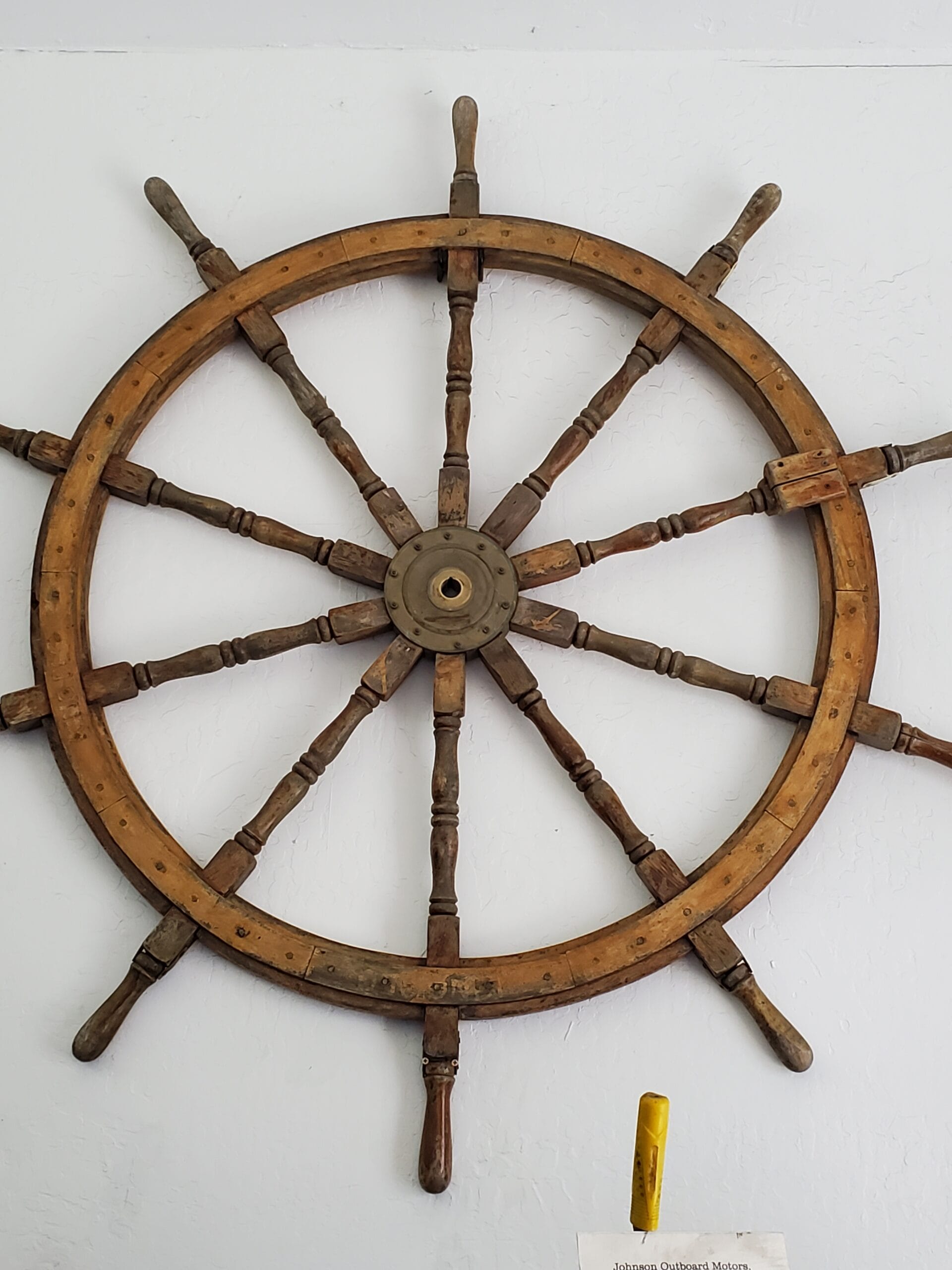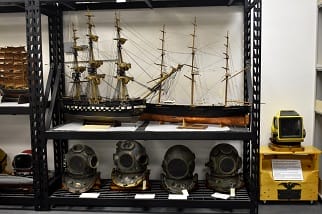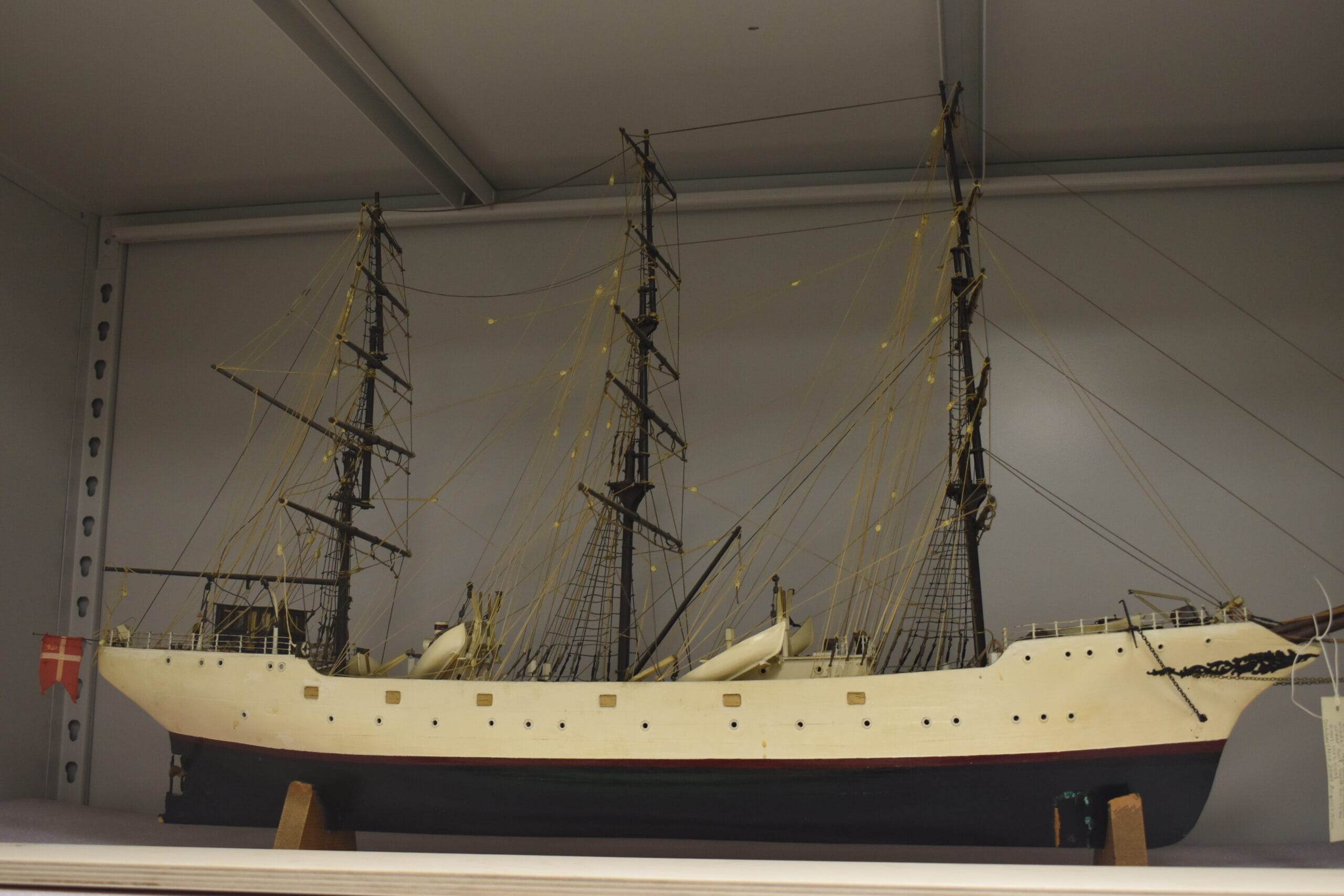CURATOR’S LOG: A visit to the Kieding Collections Chandlery and conversation with Collections Manager Lydia Kaestner
By Rita Serotkin
Last month, I explored what it means to be a curator and introduced you to SBMM’s own curator, Emily Waingrow Falke. This month, continuing with an in-depth look behind the scenes of the Museum, I decided to visit the Kieding Collections Chandlery and meet with another invaluable member of the staff—Collections Manager Lydia Kaestner.
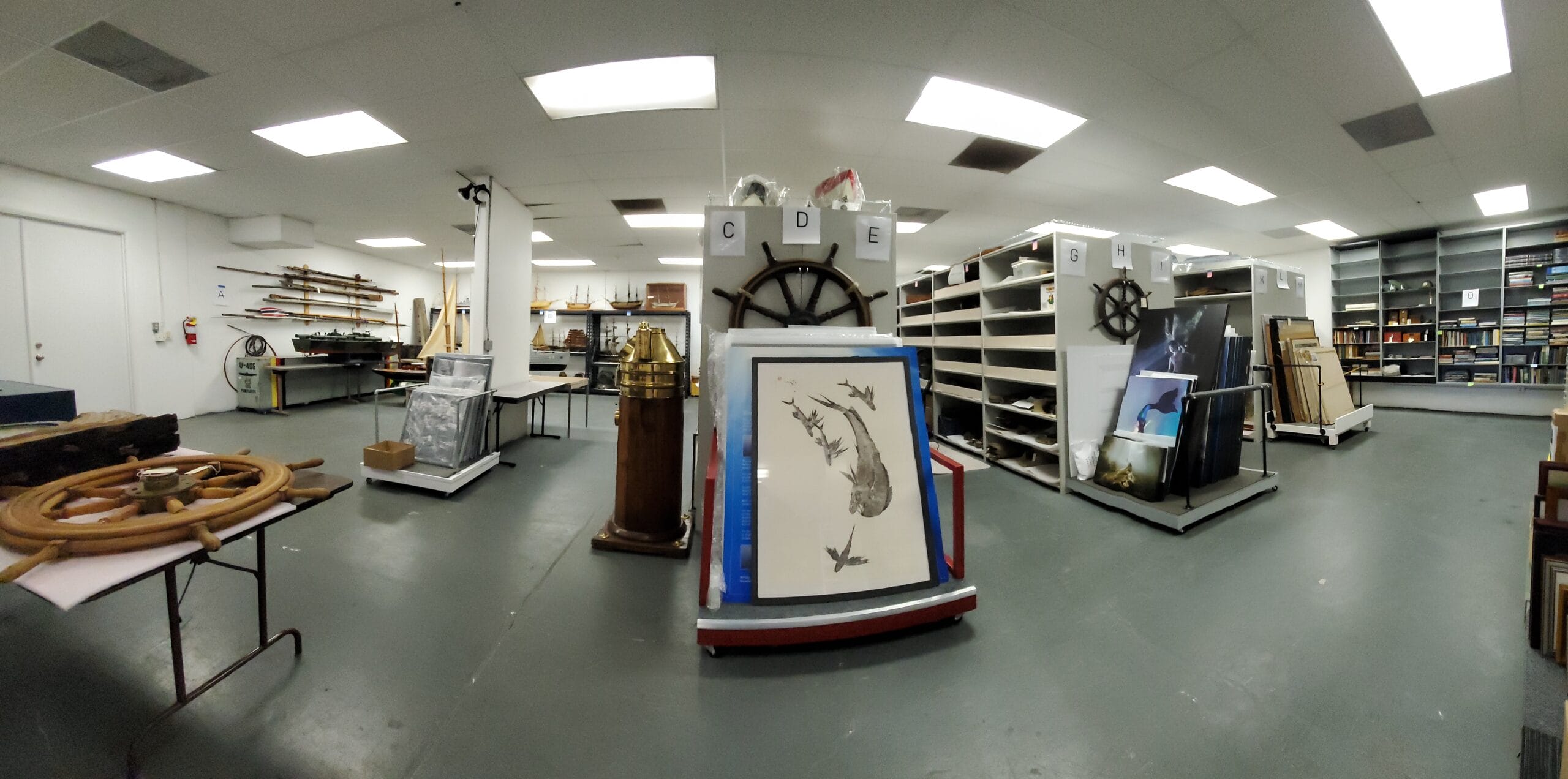
Are you wondering what the Kieding Collections Chandlery is? The Chandlery, named for one of the Museum’s founders Robert Kieding, is where SBMM stores its artifacts when they are not on display in one of the current exhibits. Now, you might think of it as a warehouse, but that falls far short of an adequate description. As you can see in the panoramic photo shown here, the Museum’s artifacts that are stored here are highly organized so they can be found easily when needed and are protected from heat, dust, dirt, water, and even earthquakes—not to mention the immaculate floors! Among the items stored here, that you can even see clearly in this photograph are Ralph Clevenger’s mermaid photos, Ernie Brooks’ images, books, documents, paintings, ship models of all types, binnacles, ships’ wheels, and other items from some of the wrecks in the Channel. Clearly, the key to the Chandlery is organization.
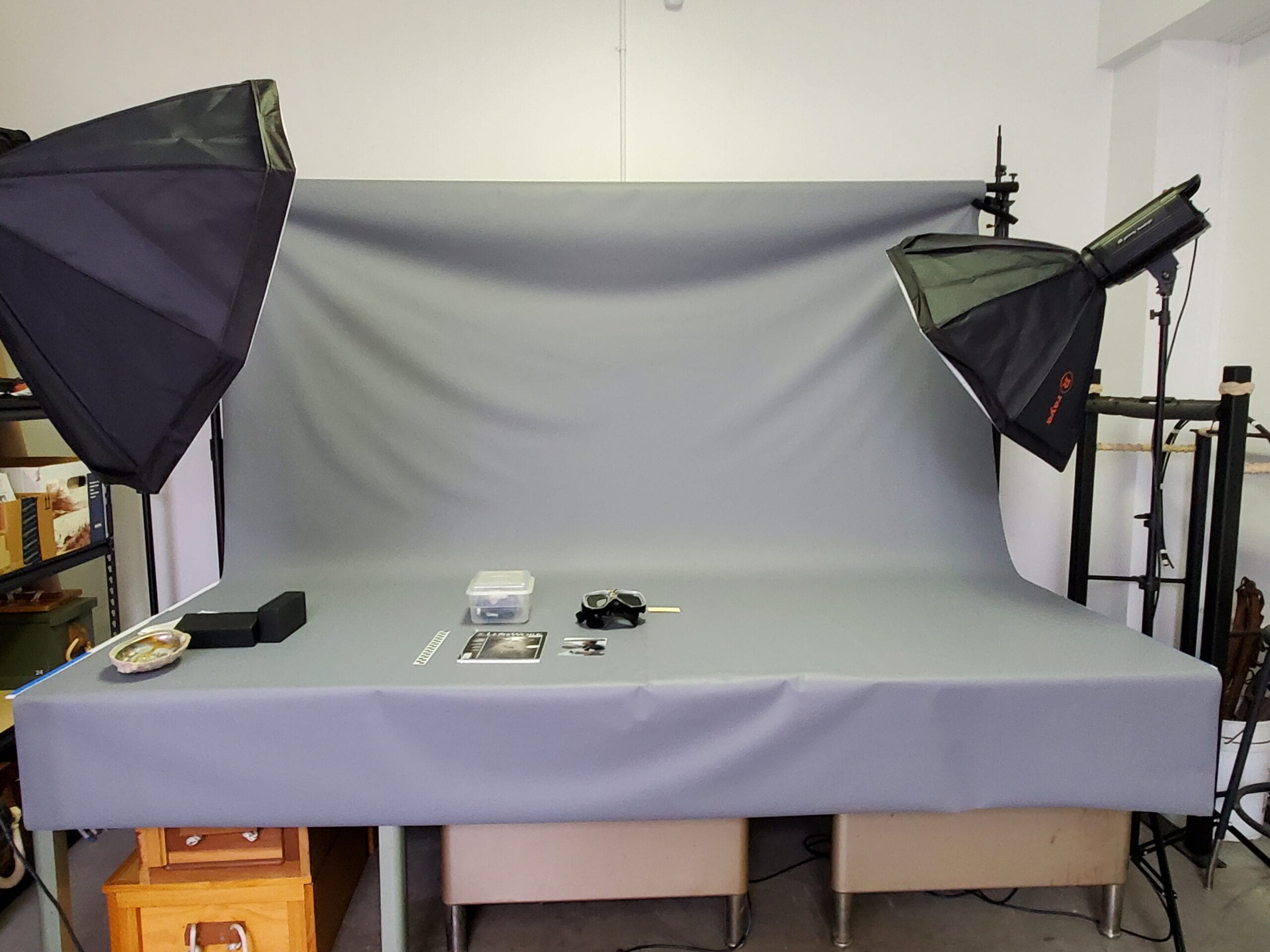
Every item in the various collections has to be photographed, then carefully catalogued in a special museum database using Past Perfect software. For each item, its size, weight, description, purpose, condition, donor, dates, and photographs are entered into the database, along with a numeric code that helps researchers, the Collections Manager, and the Curator locate them among the many shelves and drawers in the Chandlery…and presiding over all of this is Collections Manager, Lydia Kaestner. It is her job to ensure that none of the items disappears into a crate and is lost forever in a crowded storage facility, much as the Biblical Ark found by Indiana Jones!
In fact, asked to describe her job and what it entails, Kaestner replied, “It takes a bit of a detective work and a lot of ongoing research of different types. I try to identify the significance and important details of each item, which can be difficult at times. There are four types of artifacts that present the greatest problems—those that have not been identified, those that are not already in our files, those with no identifying information, and those whose significance is unknown-. They can be frustrating to work on, but very rewarding when the puzzle is solved.” As Kaestner is doing the first full inventory of the SBMM’s collections, she said there is still much information that needs to be tracked down and entered in the database.
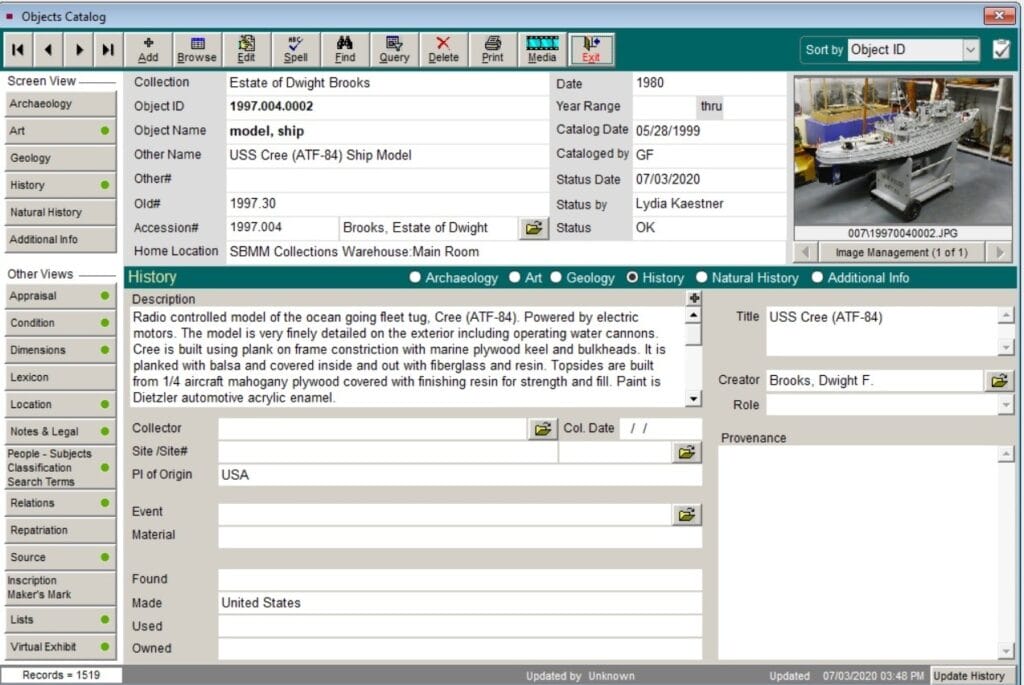
To show us what all of this looks like in practice, Kaestner shared the database screen for one of the Dwight Brooks radio-controlled ship models that is not currently on display in the museum, the USS Cree. As you can see on the left side of the screen there are many different screen views and details to be identified and described, and she has had to take careful photos of the model. Kaestner’s goal is to make the Chandlery a valuable resource for people who want to research Santa Barbara’s maritime history.
Kaestner gave us a tour of some additional areas of the building—boxes and boxes of different types of documents, hundreds of maritime-related books and old ship logs, uniforms, sailors’ trunks, and shipwreck artifacts. Among some of the more intriguing items she showed us, were a Ship’s Knee from the Jane L. Stanford, which sank off of Skunk Point on Santa Rosa, a wheel from La Jenelle, a brass battle lantern from the USS Delphy, the flagship of the destroyer group that ran aground at Honda Point, and—our favorite—an 18th century telescope!
As we looked around the Chandlery and realized the breadth of the task involved in cataloguing all of the artifacts, we couldn’t help but feel overwhelmed, and we wondered how someone would prepare to be a Collections Manager. Kaestner told us she graduated from the University of California-Santa Barbara (UCSB) with a Bachelor of Arts degree in History of Art and Architecture and spent a year working on the UCSB Museum’s Architectural Design Collection. Other job requirements? Definitely attention to detail, patience, and determination!

